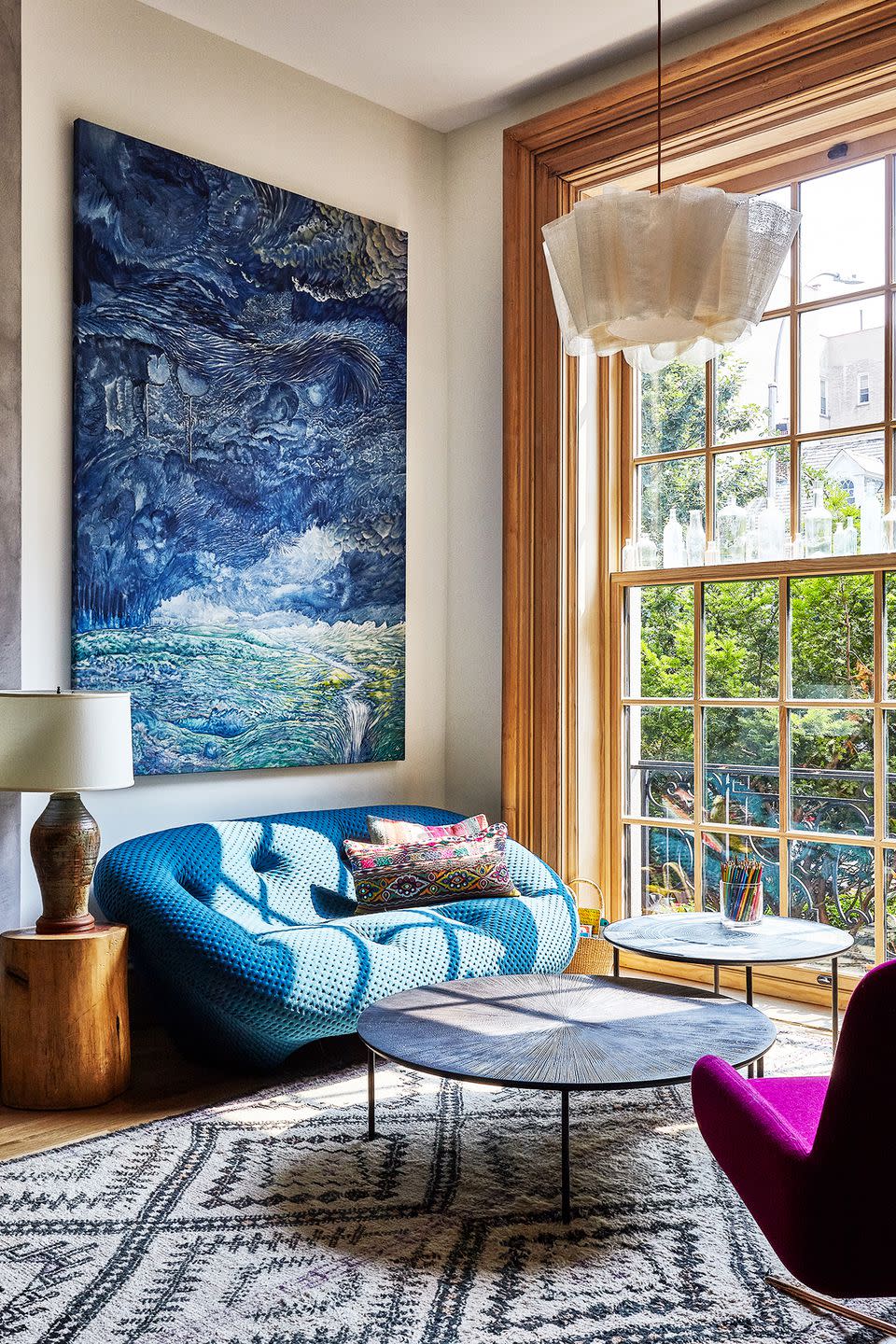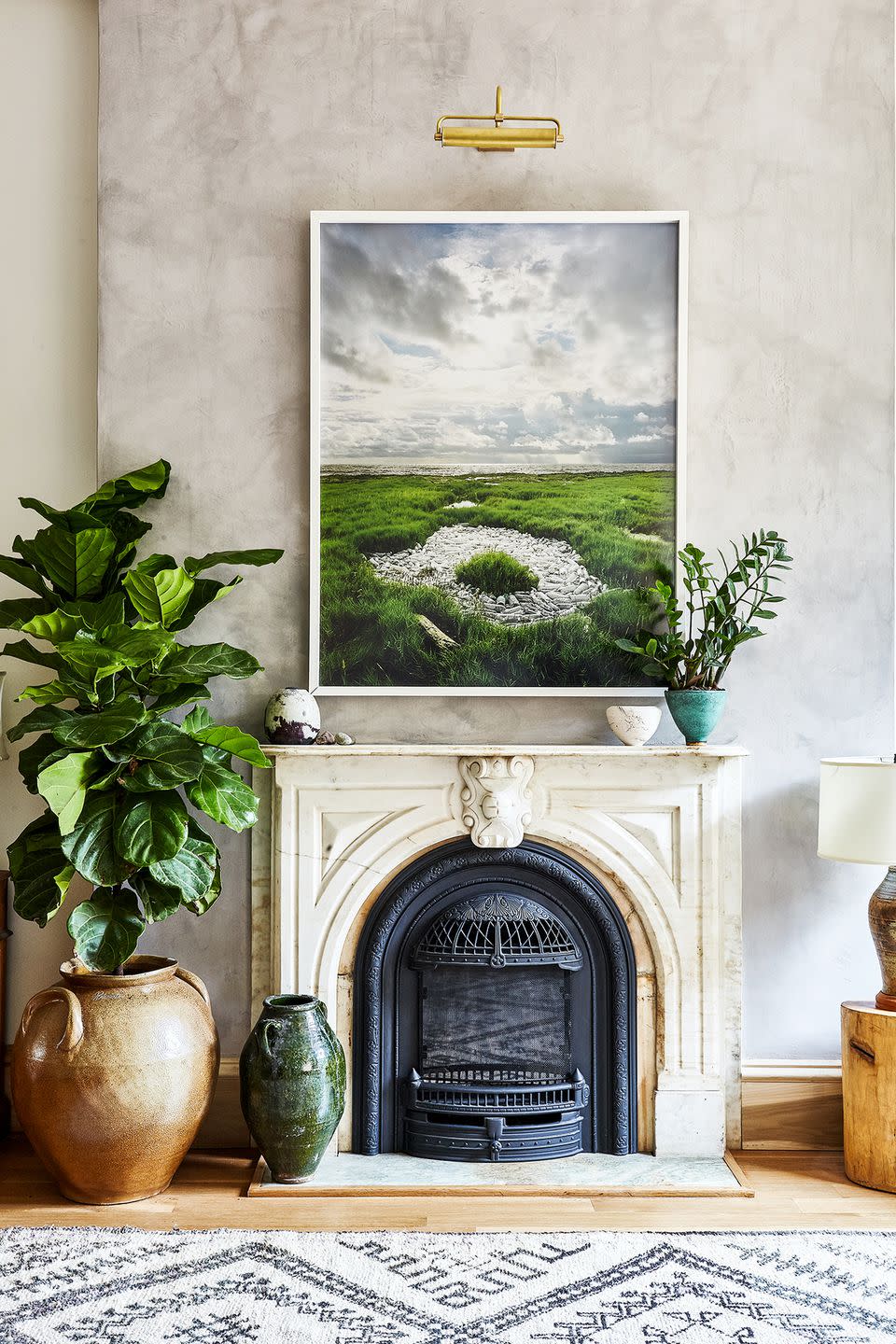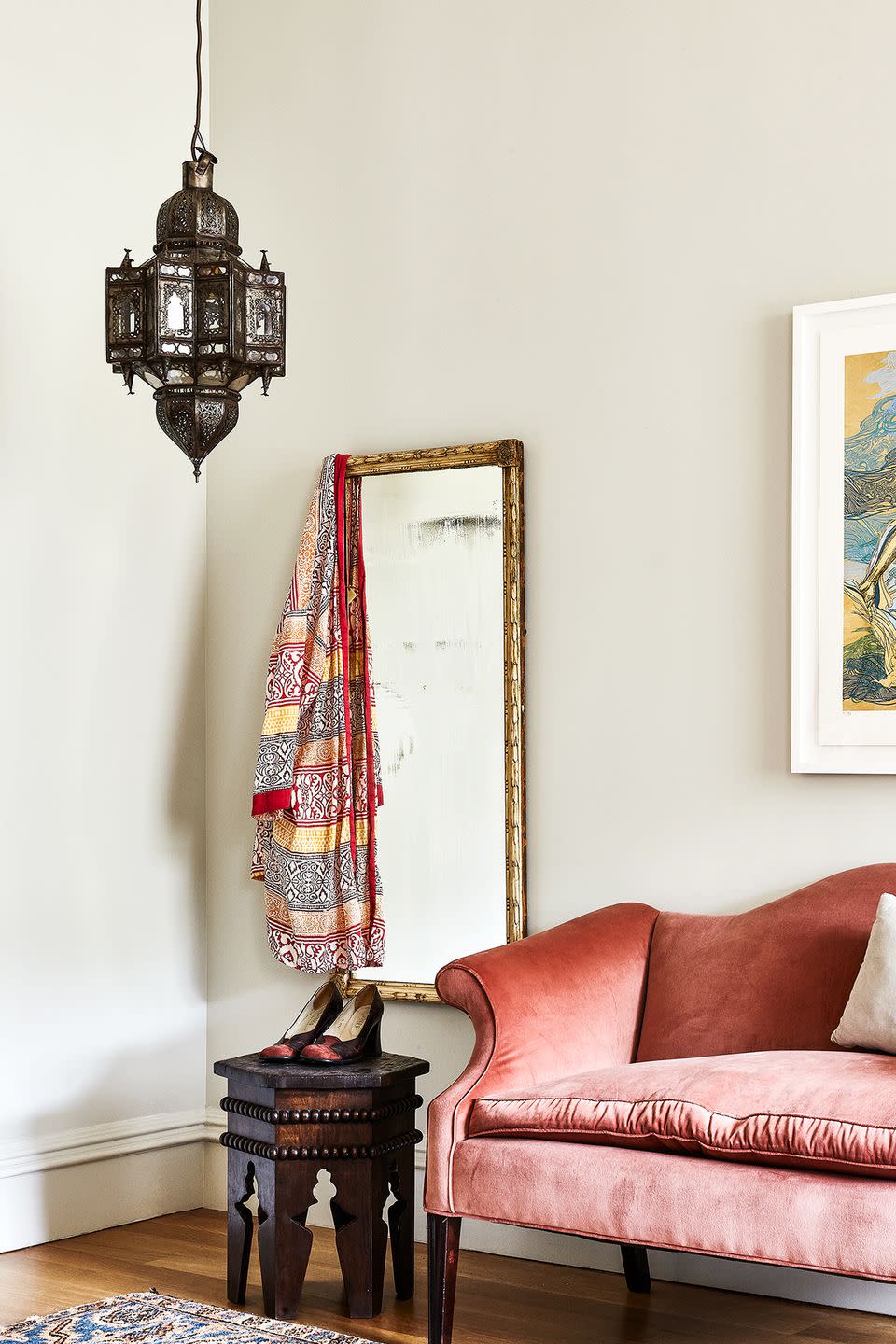An Interior Designer's Secret to Redecorating Your Home With What You Already Have

When we first saw this family townhome, we were instantly struck by its balance of warm, lived-in energy and fresh, elevated aesthetics-each room is well-curated and contemporary, but far from sterile. This careful balance is a signature of Shanti Crawford's, the interior designer behind Brooklyn-based firm Indigo & Ochre.
Indeed, when she was hired to take on this project, she was determined to work with almost all of the preexisting pieces. We're not exaggerating when we say pretty much everything in this house was here before the remodel, save for a few light fixtures, appliances, and some fresh upholstery and paint jobs. Her process is as sustainable as it is stylish.

With four-and-a-half baths and five bedrooms, Crawford had a lot of square footage to cover. "The townhouse was built in the late 1860’s in the French Second Empire style... When my clients bought it, it had four kitchens and was a rabbit warren of small rooms. It was a gut renovation over the course of more than a year," she tells us. To minimize waste, and because gut renovations tend to contribute the most waste to landfills, she focuses her sustainability efforts on responsible consumerism.
"The relationship between this aesthetic and the politics of sustainability and social responsibility is what drove every decision we made," Crawford tell us. She sees sustainable decorating as simple a four-pronged deal: Repurpose vintage items, revitalize outdated pieces, shop vintage whenever possible, and source the rest from ethically-produced companies.

In this Clinton Hill home, that meant choosing vintage rugs, textiles, furniture, lighting, and decor, incorporating reclaimed wood as much as possible (like as floating shelves), and revitalizing banisters and window casings. As far as tiles, plumbing, and even furniture, she researched the companies' employment practices to make sure they were aligned with Indigo & Ochre's standards. Many of them ended up being smaller, independent makers in the U.S.
Rather than seeing it as tedious, Crawford's design philosophy is all about taking something undesirable and making it look and feel intentional, beautiful, and meaningful. That challenge-turned-opportunity speaks directly to her personal style, something she describes as ever-evolving.
It "expands as one travels to more corners of the earth, is inspired by more works of art, has more exposure to different architecture and artisanship, and even experiences of new forms in nature. Your home, too, should reflect your family’s narrative, interests, travels, etc.," she explains. By that, she's referring to sentimental collections, inherited heirlooms, and flea market treasures on their second, third, or fourth lives.
This mindset marries well with the design directive. Her clients "wanted their home to feel timeless, un-precious and un-fussy," Crawford tells us. With three kids and a dog, they're busy, but they also wanted their home to be a place of joy and comfort, which meant it couldn't too high-maintenance.

Not to mention, "most clients [don't] need to be convinced to keep pieces they love as long as they function well and can be made more attractive (if they aren’t already so). Reworking existing pieces helps them stretch their budgets as well, so I often find that this practice helps tick lots of boxes: Emotional (since they are often attached to them), functional (since we don’t try to rework pieces that don’t serve that purpose), budgetary and for environmental concerns."
Her client is also a visual artist and has spent time in Morocco, both of which are strongly communicated in the interiors, from the fearless use of shape, color, and texture to the Moroccan accents. Crawford's job was just helping her client channel those things into the material space. "I try to help educate my clients along the way about how best to hone their taste and cultivate a point of view if they don’t have one confidently established. But everybody has preferences, things they are drawn to and not. I try to start from there and help them refine and elucidate those themes. It's their home, not mine. And it should look like it," she tells us.
Follow House Beautiful on Instagram.
('You Might Also Like',)

